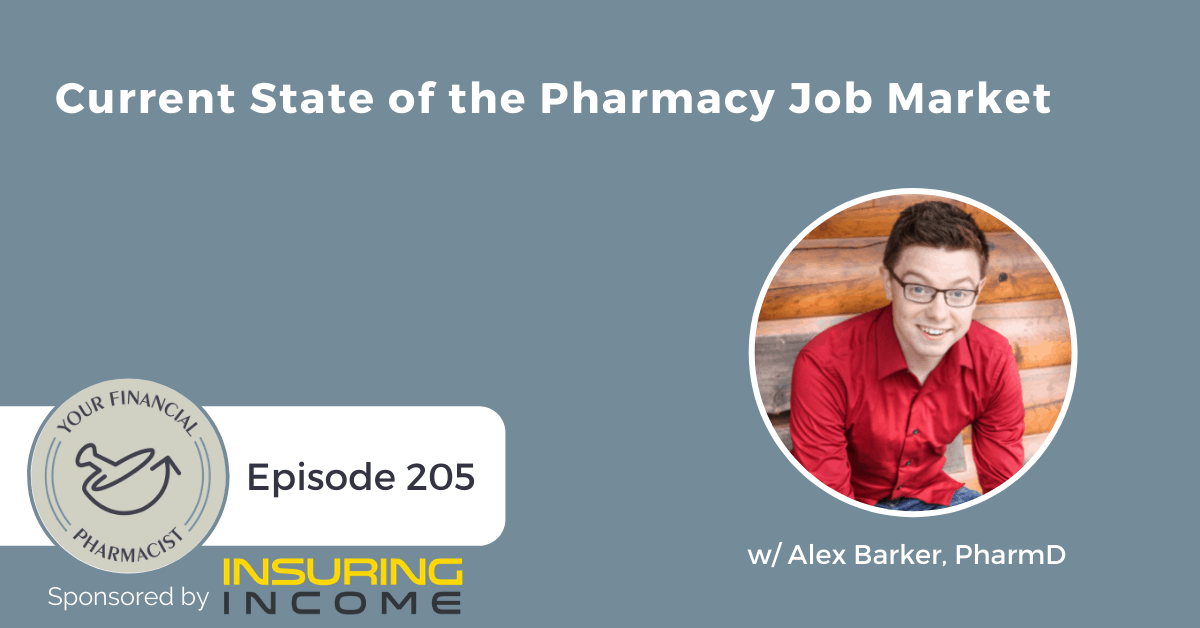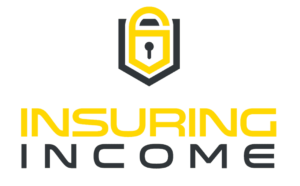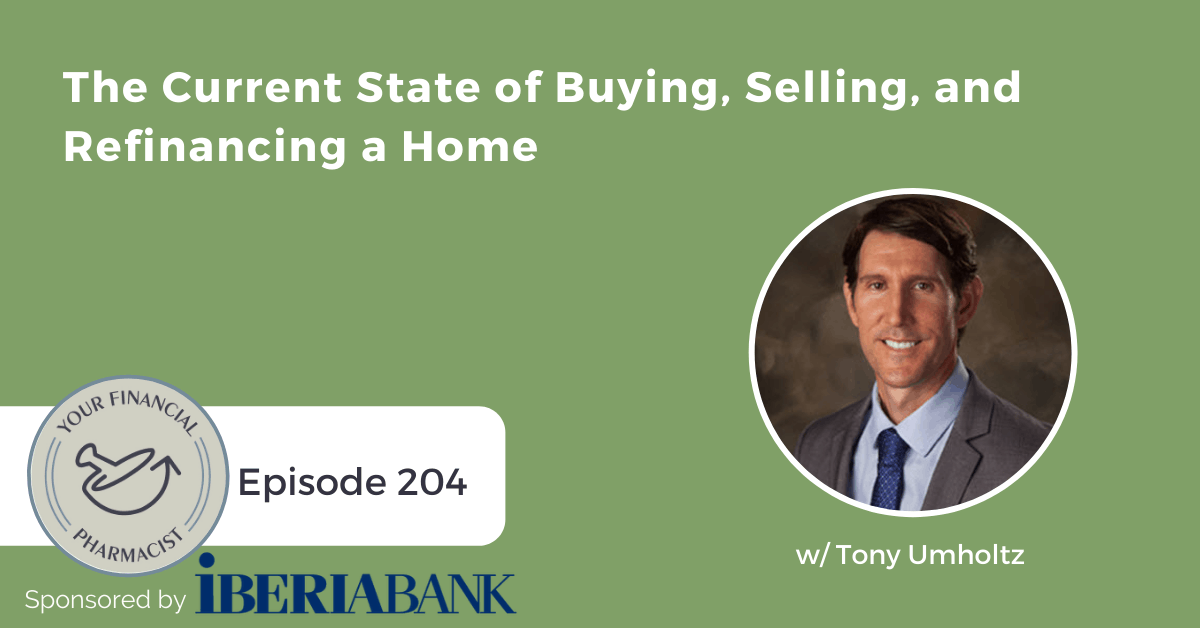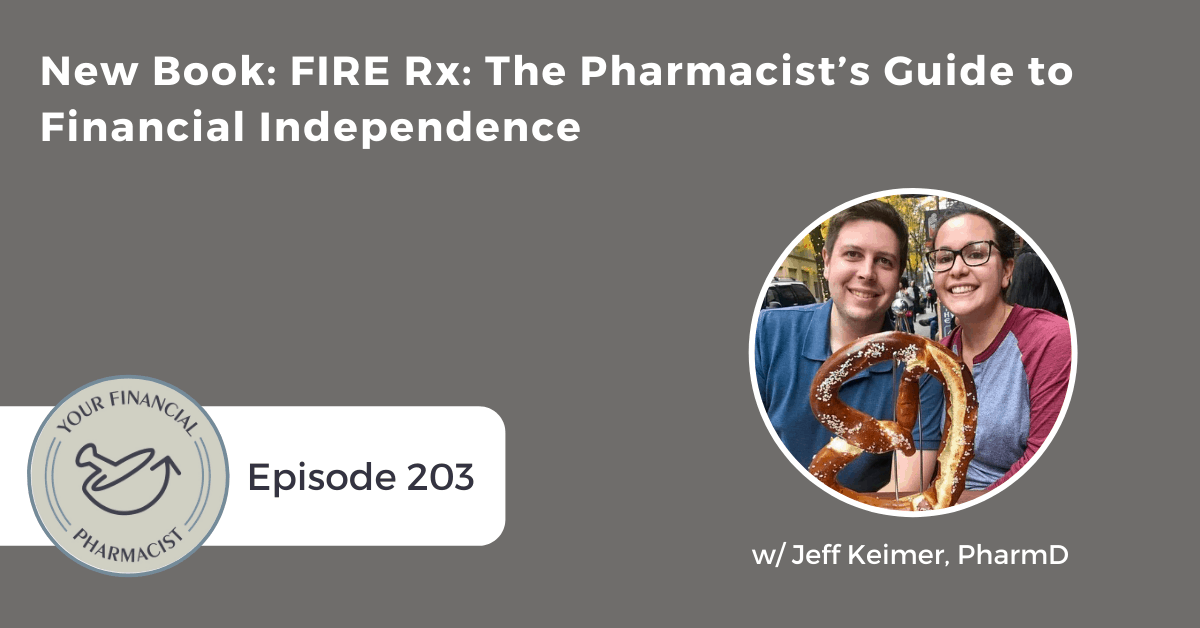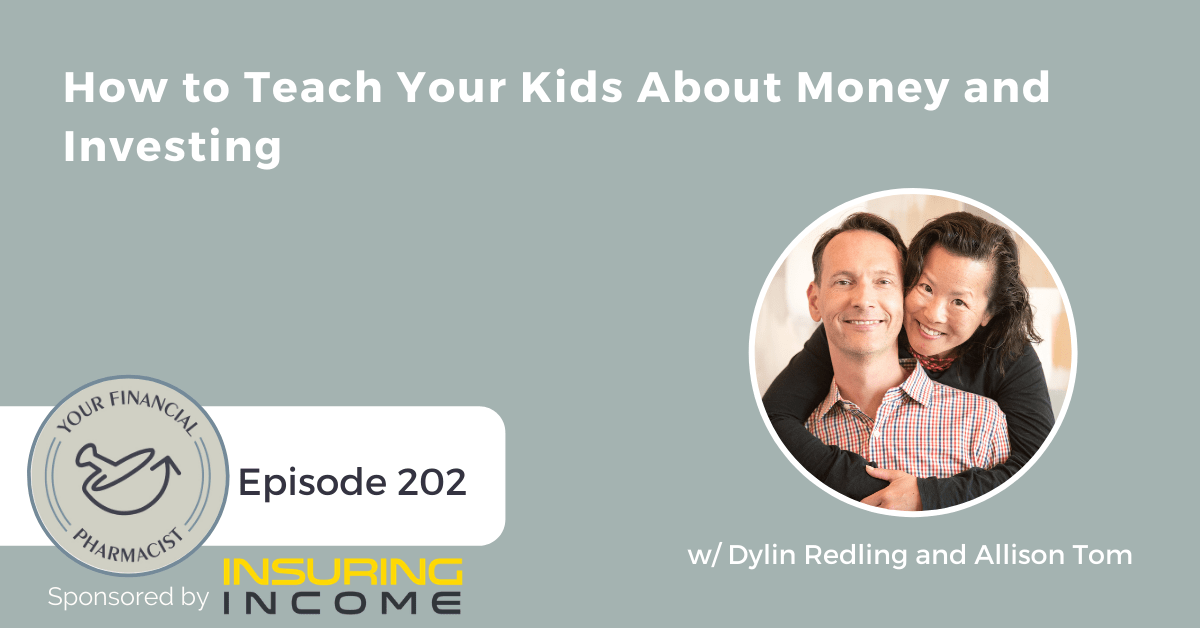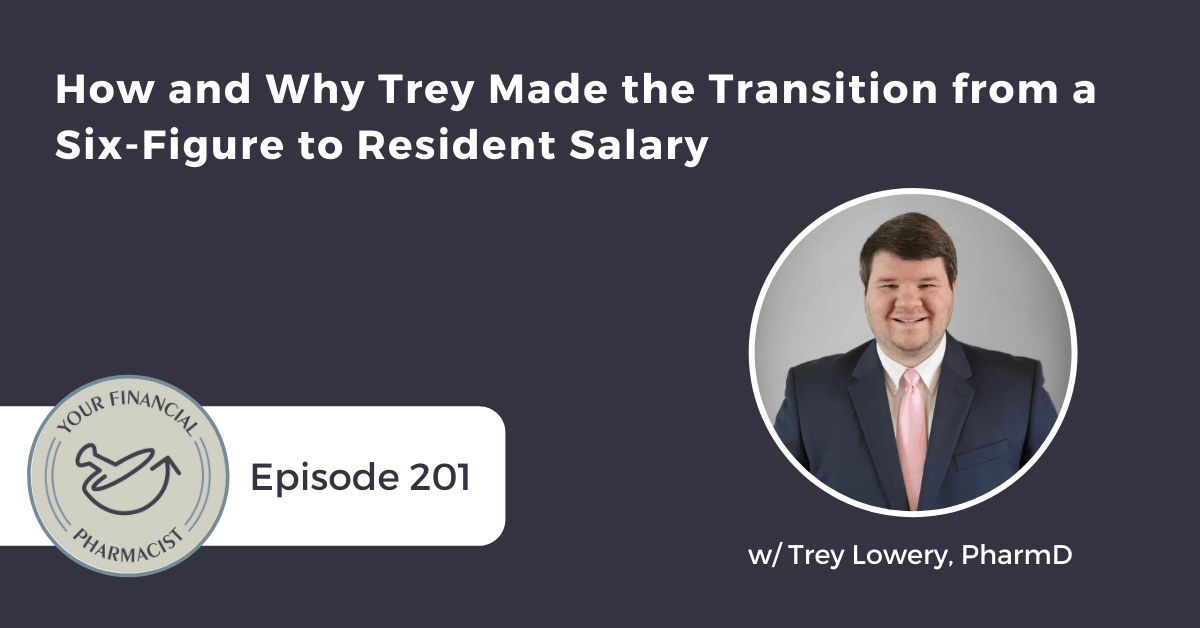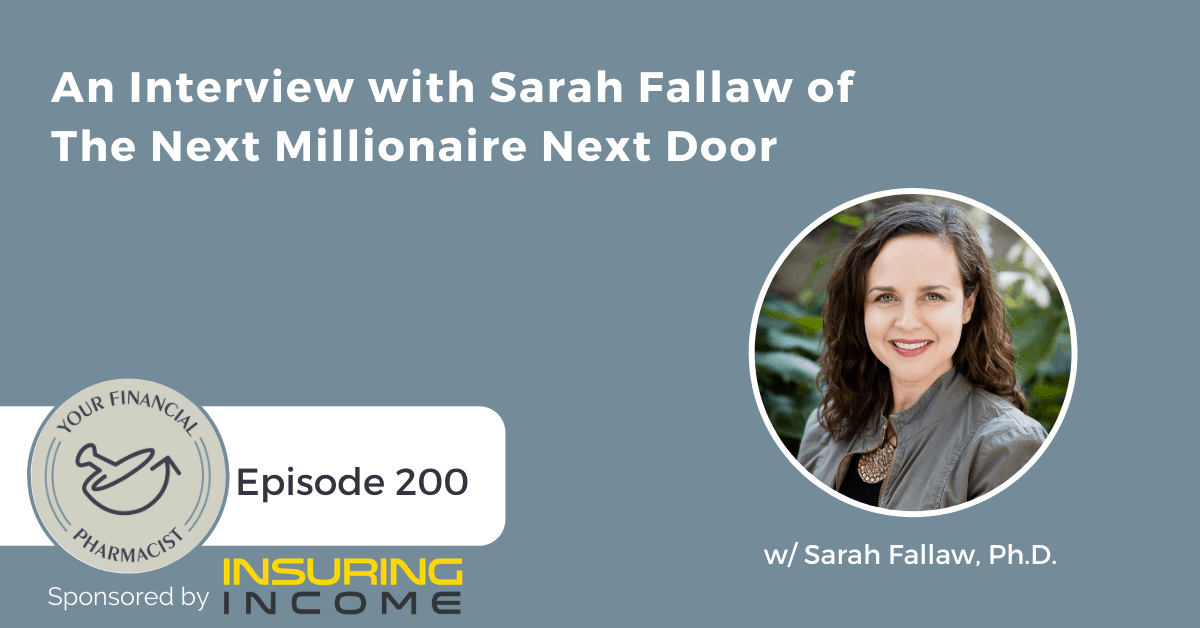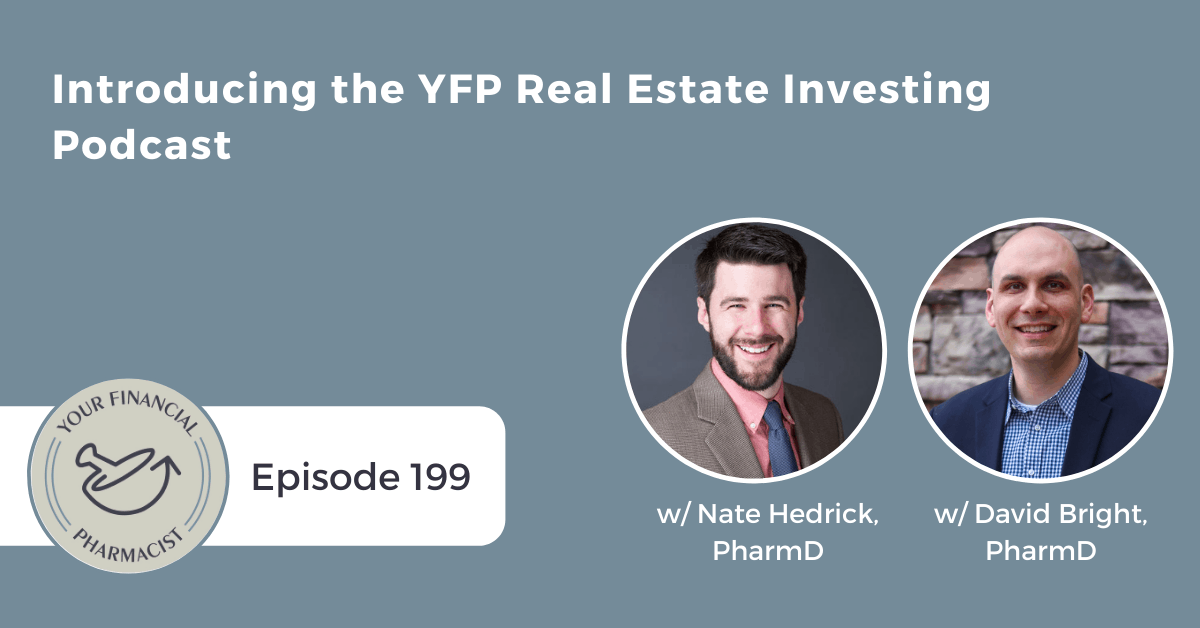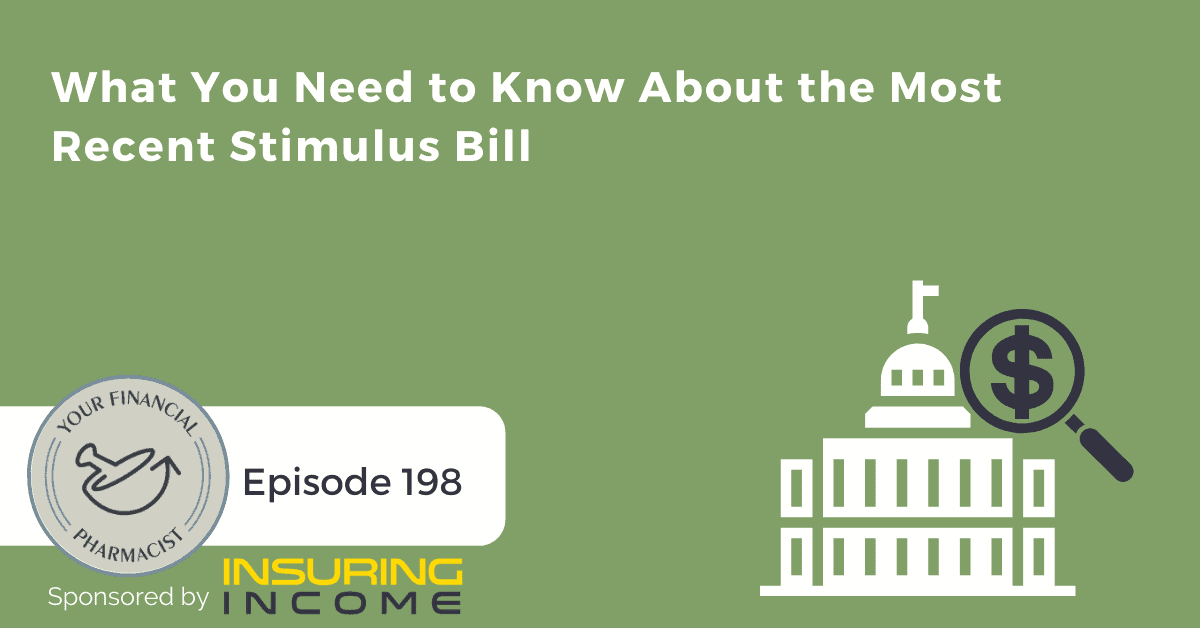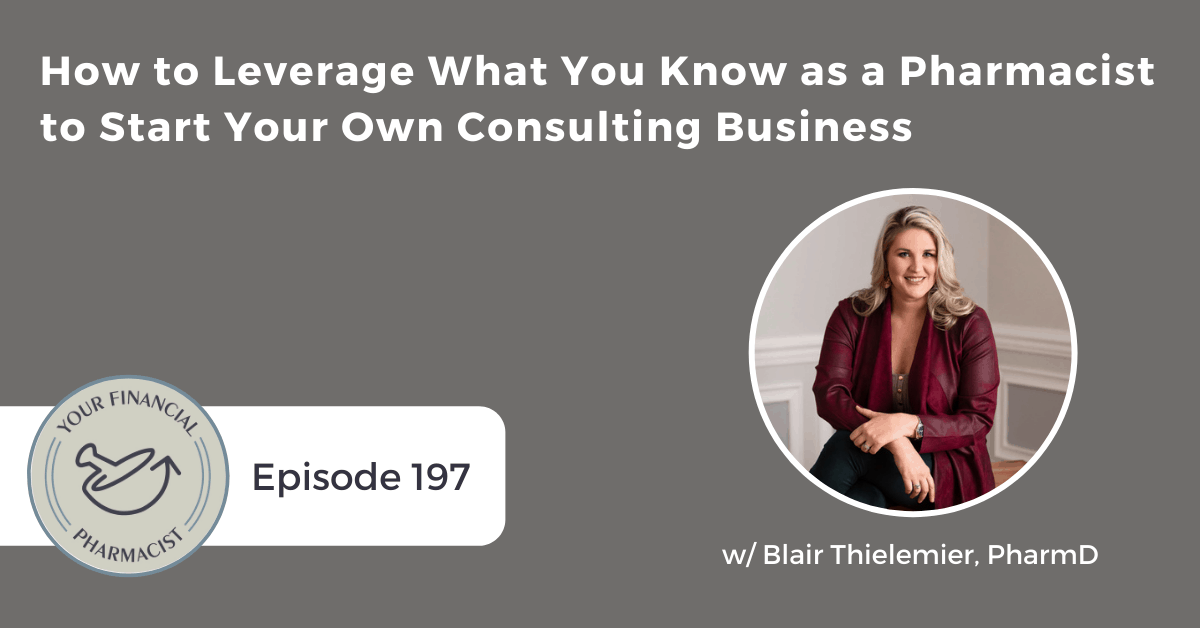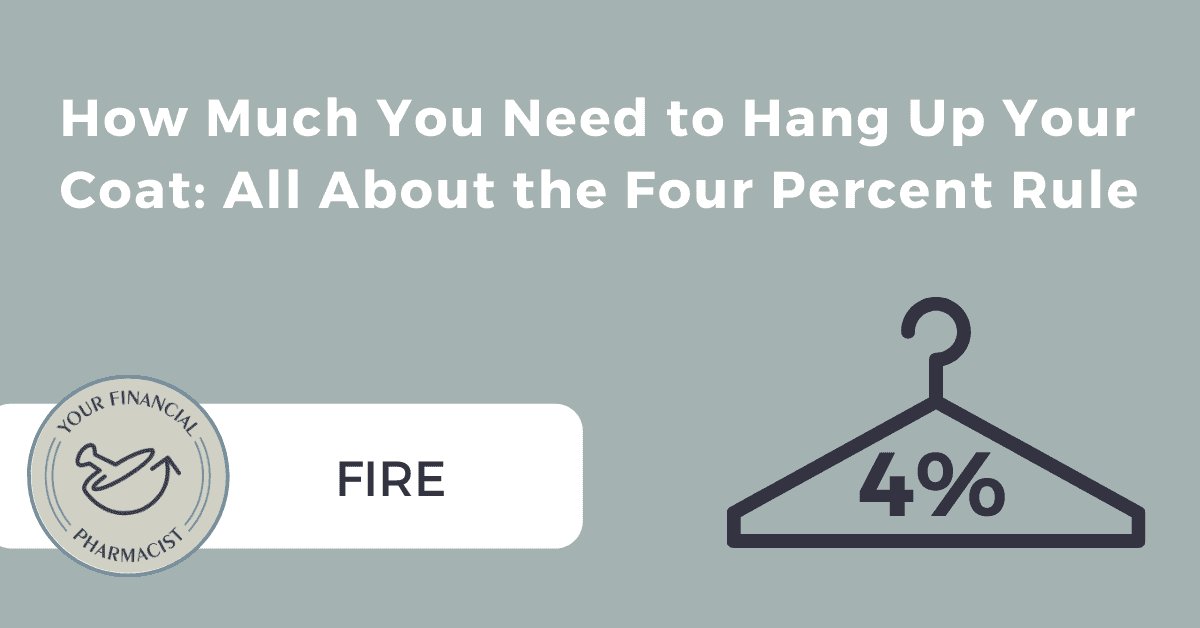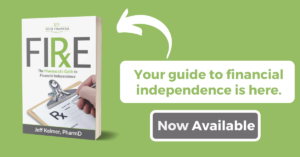Current State of the Pharmacy Job Market
On this episode, sponsored by Insuring Income, Tim Ulbrich welcomes back to the show, Alex Barker, the founder of The Happy PharmD. They talk about the current state of the pharmacy job market, considerations for those looking for their first position or switching jobs, and the intersection between your career and your financial plan.
About Today’s Guest
Alex Barker is a pharmacist, entrepreneur, author, and creator of The Happy PharmD and the Happy PharmD Summit.
Summary
Alex Barker, pharmacist and founder of The Happy PharmD, joins Tim Ulbrich to discuss the current state of the pharmacy job market. With many new pharmacists graduating around this time, looking for new positions, and still others looking to change positions, it is a perfect time to touch on the pharmacy job market, its current state, how that differs from previous years, and what the future looks like for recent graduates.
Alex shares some interesting data on the state of the pharmacy industry that includes the number of open positions currently, the percentage of full and part-time jobs, and the percentage and number of positions available in the undefined category. Without information as to whether undefined jobs are full or part-time, applicants should consider reaching out to the hiring department for more information, creating a new connection at the same time.
Alex explains that much like tackling financial goals, career goals should be approached with the end in mind. Without much change to a pharmacist’s salary throughout their career, a side hustle can provide opportunity in the form of personal satisfaction as it relates to the pharmacy career as well as a pathway to financial goals, ultimately leading to financial freedom.
Mentioned on the Show
- Insuring Income: Get Quotes and Apply for Term Life and Disability Insurance
- YFP 192: Findings from the 2021 Pharmacist Salary Guide
- 2021 Pharmacist Salary Guide
- The Happy PharmD
- The Pharmacy Job Market Update: Q1 Review
- AACP Pharmacy Demand Report: 1st Quarter 2021
- JobRx 2021 Pharmacy Jobs Report
- North American Pharmacist Licensure Examination Passing Rates for 2018—2020 Graduates Per Pharmacy School
- 2019 AACP National Pharmacist Workforce Study
- U.S. Bureau of Labor Statistics, Occupational Outlook Handbook: Pharmacists
- PayScale
- YFP 104: Jason Long’s FIRE Journey
- YFP 126: Going Beyond Six Figures Through Medical Writing
- YFP 197: How to Leverage What You Know as a Pharmacist to Start Your Own Consulting Business
- YFP 112: Why One PhD Pharmacist is Taking On Two Side Hustles
- Connect with Alex Barker on LinkedIn
Episode Transcript
Tim Ulbrich: Alex, happy to have you back on the show.
Alex Barker: Thanks for having me back. I think it’s a good sign that I’m back, right?
Tim Ulbrich: It is. You are a frequent guest and certainly a friend of YFP, and appreciate the contributions that you make on the show. We had you on last on Episode 192, so this was way back when, February, where we talked about the findings from the 2021 Pharmacist Salary Guide. And today, I’m excited. We’re going to have you on to dig into the current state of the pharmacist job market, including financial considerations for those that are starting their first position and those that are looking to make a move to another position. So before we jump in, Alex, I don’t want to assume that all of our listeners know who you are. But give us a quick intro to Alex Barker and The Happy PharmD.
Alex Barker: Oh, I’m just some goofy pharmacist —
Tim Ulbrich: True, true.
Alex Barker: — that figured out entrepreneurship. I’m Alex Barker. I founded The Happy PharmD in 2017 I think. And since then, we’ve helped about 700 pharmacists transition into new and better jobs. We do career and business coaching. And we focus a lot on helping people find that spark again with their career, help them create an indispensable career rather than feeling like eh, dreading what I do or I feel like my company’s going to get rid of me. So that’s my main focus. I do a lot of other fun stuff like hanging out with Tim Ulbrich in a podcast. I love Thai food and anime. And that’s — oh, and Dungeons and Dragons. That’s me in a nutshell.
Tim Ulbrich: Of course Dungeons and Dragons. Yes. You know, Alex, I’ve never asked you this question, but I’m going to put you on the spot here for a moment. When you talk about 700+ jobs or pharmacists that you have impacted to help them find a better job, more fulfilling career, however we want to word it, have you stopped and reflected on that? Like the significance of that. I know you run at a pace that is fast — we’ll call it that. But I mean, have you paused — I’m fascinated by the topic of legacy. And I think you’re just getting warmed up. But you know, what makes people tick, why do they do what they do, and when I think about the work that you do and obviously the team at The Happy PharmD are doing and the impact that has on those individuals, the profession at large, but then I even think about pharmacists being in a more fulfilling job, you know, as I think about myself being a parent of four boys and obviously my relationship with my wife Jess, like we know that home and work are so interconnected and the joys and challenges of work, we often bring home or vice versa. And so even folks that are in a more fulfilling position, the positive impact that has on their families, their households, like have you reflected on that?
Alex Barker: No. I have to admit, I don’t know how to even think about it.
Tim Ulbrich: Yeah.
Alex Barker: It’s a lot of people. And on top of that, it’s their spouses, their partners, and then it’s their kids, their community. It’s a big ripple effect. And I don’t know how to take that in. On top of it, I think you and I share this that we’re pretty driven people, and so as soon as we accomplish something, we’ve forgotten it and then we question our value like the next day. Like oh, what am I doing? Am I really achieving everything I want in life? Because I have this new goal now, and it’s not accomplished yet. But truthfully, no. And I –admittedly, I actually have a coach now, and this is one of my areas of improvement is reflecting on the things that I have accomplished because I think it’s very easy to get addicted to success. And I am working on it. So that’s my answer is no, and I’m trying.
Tim Ulbrich: Well, and it wasn’t in my notes for the episode, but when you led with that intro — and the reason I asked you it, besides just to make you a little bit uncomfortable because that’s kind of fun every once in awhile — is the reason I asked you that is I, too, am being challenged by a coach of stop, enjoy the moment, like reflect on what’s happened before you’re off and running into the next thing. And so I think that’s a valuable thing for us to talk about. But perhaps for even folks that are listening, I think many pharmacists are achievers by nature, and I think it can be easy to get caught into the strive, strive, strive without stopping along the way to enjoy it. So onward we go. This episode, you know, as I mentioned, really talking about what I see as the intersection between one’s career plan and their financial plan. And really good timing for this episode, many pharmacists graduating right now, others I suspect that are looking to make a job change. And with that, comes navigating a lot of new things, you know, whether it’s finding that position, perhaps some that are choosing or changing their career path, how does this look for me for the next 5, 10, 15 years? What about managing your finances during this transition? What about those student loans, budgeting, other financial goals? And really figuring out how to set themselves up for long-term success both professionally and financially. And we’re going to touch on several of those things throughout the episode. So Alex, let’s talk about something that every graduate is faced with right out of the gate: finding a job, choosing a career path, as much as some may enjoy being a student, at some point, we’ve got to make that decision. So you recently held the webinar about the Q1 review of the pharmacy job market where you dug into the supply and demand of pharmacy jobs. And I’m going to go there for a few minutes. And one of the questions I have to hear to start us out with is, what did we take away from Q1 in terms of the number of jobs that are out there, what types of positions are out there, and really the current state of the pharmacy job market?
Alex Barker: Yeah. So let’s just do high overview. And I know I’m going to be saying a lot of numbers. And if you’re like me, it’s hard to comprehend numbers when you’re listening to something. So some of these numbers are on our website, you can always check them out later if you want, or we have a presentation where we go over them. And I want to just take a moment to pause and ask, Tim, I know you already know the answer, but if you had to guess how many jobs were created in Quarter 1 of 2021, pharmacist jobs, how many would you think?
My answer was I thought maybe 15,000-20,000, somewhere in that range. Did you have an idea?
Tim Ulbrich: Yeah, no, my question here was are these — are you talking about open positions or like newly created positions?
Alex Barker: Open, newly created positions.
Tim Ulbrich: OK. Yeah, I would have — I don’t even know if I would have said that high, although when I think about kind of the nationwide reach and some of the roles that are expanding, some of the states that are doing some creative things, yeah, that sounds about right.
Alex Barker: So that’s what our past kind of has indicated. There is a report out there. I believe it’s called the Pharmacy Demand Index or Pharmacy Job Index. It changes names, I feel like, every other year.
Tim Ulbrich: It used to be the PDI. I don’t know if it still is.
Alex Barker: Yes.
Tim Ulbrich: Yep.
Alex Barker: Yes, I don’t think it is that name any longer. But they predicted — or they reported I think in Quarter 4 of last year that there was like somewhere between 5,000-10,000 jobs created. Well, at The Happy PharmD, we’ve recently strategically partnered with JobRx, which is a job board. And they collected all of this data, and this is data from company websites where a company posts a job, and they take that information and document it. And in Quarter 1, they reported 50,000 jobs were created, just over 50,000 jobs.
Tim Ulbrich: Wow.
Alex Barker: When I heard that, I thought that was insane. At first, I thought, that’s COVID. But then I thought, no, most of these companies did the majority of their hiring in 2020. So that — it blew me away. I just couldn’t believe it.
Tim Ulbrich: That was my thought too, Alex. When you said that number, I started to think about, you know, I remember seeing some of those offers for part-time vaccine help that some of the chains and others were doing. So I think here, the interesting question is like, peel back the onion a little bit, right. Of those 50,000, because I think many of our listeners, we’ve kind of fallen into this script of like, the job market is what it is in pharmacy right now. But that number might be shocking, so give us the details behind that. What’s going on?
Alex Barker: I think we have to because I think this is totally different than what is suspected or talked about online. The vast majority of these jobs are community jobs, about 73%. And then another 25% were health systems, which includes long-term care and home infusion. So probably no surprise there. I know that there’s a big push in careers to do nontraditional things. But vast majority of open and available jobs are community and health system. The majority of those jobs were just straight pharmacist jobs because when an employer posts a job online, you know, a lot of people want to use the word “clinical pharmacist,” but the word “clinical pharmacist” only was about 6%, a little over 6%, of the jobs that were available.
Tim Ulbrich: That makes sense.
Alex Barker: And then another 12% were management jobs. However — and you actually kind of alluded to this earlier — the majority of these jobs were part-time, part-time jobs. So let me — I’ll break this down in a minute, but 40%, so you think, that’s not the majority, well, 40% were part-time, 28% were full-time jobs. Not even a third of the jobs. But 28% of these jobs were not defined, meaning that when a company posts a job online, they put it on their website, they don’t say whether it is full-time or part-time. And I think practically every jobseeker has seen that happen where you look at a job and you’re like, is this 20 hours a week? Is this full-time? You’re not quite sure. Well, unfortunately, it’s common practice for that to be happening. So 28%, another almost third of the jobs, didn’t say whether they were part-time or full-time.
Tim Ulbrich: One of the things, Alex, when I hear this — and just to recap those numbers for those that are listening and may not be audio learners — is, so about 28% full-time, about 40% part-time, and about 28% that were undefined. So that 40% that’s part-time, you know, when I think about the financial implications, great to hear about the number of jobs that are created. And then I dampen that question a little bit, right, when I start to see the part-time. And let’s call it out right up front is that there are many folks that may opt in and want a part-time position for very good reasons. And that’s not what I’m referring to here. I’m referring to folks that may want full-time work and aren’t able to find it, which obviously has significant financial implications. What are we defining as part-time? Can we pin that down? I know one of the trends I’ve seen is 30 or 32 has become the new 40, right? So what used to be let’s just say for example base salary of, I don’t know, $110,000 in Columbus, Ohio, for a pharmacist working on average 40 hours per week in community pharmacy, you know, now, they might be guaranteed 30-32 hours, sometimes a little bit less, sometimes a little bit more, and maybe that $110,000 now looks like $85,000 or $90,000. And certainly in some of those cases, opportunities to get additional hours but they’re “guaranteeing” some base that’s a little bit lower than 40. So are we talking 15 hours? 20-25? Like what is the threshold here? Or is it a ‘it depends’?
Alex Barker: It’s of course ‘it depends.’ It’s always up to the company what they define, right, on that limit. And I’m no law expert because every state is different in how they define a little bit on this. I think with a decent rule of thumb, you can say it is less than 32, 30 hours a week. But to your point, I think there’s even more danger here because everyone’s probably heard a horror story or two that you get hired on part-time, you were told we’ll guarantee this amount, and it turns out they only need you once every other week. There’s a huge financial consideration for anyone going for a part-time position. And career-wise, there are benefits and pros and cons for doing something like that because on the one hand, it’s nice to get a part-time job. It could give you some flexibility, and it could help pay your way while looking for your next job. But on the other hand, if you just want a job to do the job and make some extra money, pay some bills, and you’re expecting 30 hours, I would encourage you, do not think that that is a guarantee, no matter what management said because we have heard this in community, in hospital, in nontraditional jobs as well. So I think the days are leaving us behind where we trust a company in telling us how much are we working and how much are we getting in return.
Tim Ulbrich: Yeah, and I think it’s just a good reminder — and I’m not saying this to be negative to companies as a business owner myself, I’m just saying it as reality of like, nothing is guaranteed, right? I mean, outside of some folks that are listening that have contracts, that have some guarantees that are associated, those are probably few are far between. But when we’re thinking about our financial plan and depending on our income, hopefully we’re not thinking about our future income as if it’s guaranteed and going to be able to fund things that we’re spending money on now. So you know, obviously, some of that can be fluid. Hopefully it’s not, but it can be. Alex, the other thing I think about here is as our listeners know very well, for many folks, their healthcare benefits, their retirement opportunities, a lot of that is tied to their employment, right? So when I — and often tied to full-time employment. So my mind is going down the path of, 401k benefits, 403b benefits, access to HSAs, healthcare benefits, dental, vision, other benefits that come from your employer. And not any one of those may seem very significant or potentially catastrophic in the moment — maybe outside of healthcare — but you know, something like a 401k, let’s just use that as an example. If you’re making $100,000 a year, and your employer is offering you a 3% match dollar-for-dollar and now you’re working part-time where not only is the salary and the hours reduced, but you’re not getting that, in that example, $3,000 per year. In that year, that may not seem catastrophic, but $3,000 a year compounded over time, especially for pharmacists that are just getting started, is very significant. So I would encourage folks to be thinking about — as we’ve talked about the intersection between the career and the financial plan — not just the salary, the sticker price, but also what other benefits may be afforded. And even for those that are working full-time and looking at other positions, that’s where you often will start to see some of the differences and nuances between one position and another and some of the benefits that can come. Alex, competition. You know, the other thing I’m thinking about here is it’s great we see 50,000 jobs, as you mentioned, not so great that many of these may be part-time. But we also have the reality of, you know, new graduates that are coming out into the market. We obviously have many that are listening to this episode. What is that looking like in terms of expected number of new graduates that are coming out into the market? And how is that impacting the competition for these positions?
Alex Barker: It’s fierce. It’s fierce. This year, in 2021, we’re graduating just over 15,000 students. And based on last year’s NAPLEX, we should probably expect at least another 14,000 and a few hundred who pass the NAPLEX because as we all know, the NAPLEX passing rates for most colleges of pharmacy has gone down significantly. And that number, the number of grads, the number of new grads every year from what we can tell, as far as I know, AACP hasn’t published information since 2019. I could be wrong about that when this goes live, but that’s the latest data that we have. The number of grads is going down steadily. By 2023, we’re looking at just under 13,000 entering the market. So we’ve got a significant group of students, probably about a third of those are going straight into residencies. And then we’ve got another two-thirds that are going into the job market. But we also have some very interesting information from AACP, they do a workforce survey every five years. And they change a little bit of the topics, but they always do ask things about your jobs. And in this group, those that were likely or very likely to be looking for a job was — it was around 34%. So again, a third.
Tim Ulbrich: Wow.
Alex Barker: And there was over 5,000 people who did this survey. And something I’ve learned in survey design is that when you get a population that big, you can start extrapolating out quite well to a larger population of similar demographics. And in our case, if we were to extrapolate that to the 300,000+ pharmacists in the United States that have an active license, we’re talking about over 100,000 pharmacists at any given time likely or very likely to be looking for their next job. So right now, in this very moment, we’ve got 100,000 people looking and now we’re adding another potentially 10,000 — I mean, many of these students probably have jobs lined up or have interviews lined up and they’re going to be hired very soon. From what we can tell, it does seem like the vast — at least the majority of students by this time have something lined up. But they’re coming into an overcrowded market. And so it isn’t looking very positive. There are some interesting things, though, happening in pharmacy that I think could be drawing attention, but that’s not obviously what we’re focusing on for this. These are just the straight facts.
Tim Ulbrich: And Alex, did I hear you correctly — and I’m guessing you’re pulling this data from the enrollment data that’s published by AACP. And we’ll link to some of this in the show notes, including the AACP workforce survey that you mentioned every five years and also some of the enrollment data — but did I hear you correctly that the projected number of graduates is going down? And I’m assuming you’re pulling that from like the current number of P1s, 2s, and 3s and then projecting that out to see what the number of graduates would be?
Alex Barker: Yes.
Tim Ulbrich: OK.
Alex Barker: Yep. So we look at numbers from NABP, AACP, ASHP, APhA, and they help kind of provide a holistic picture of what’s happening. The most data we have on this stuff is obviously students.
Tim Ulbrich: Yeah.
Alex Barker: Once we enter the workforce, the numbers are a lot more variable. We rely on the Bureau of Labor Statistics, which is always changing. Some people may know this, that they are predicting negative job growth right now for pharmacy. And so it is a tight, very tight market and likely we’ll be seeing oversupply for quite some time. But I’m positive. I think I’m more positive about the future of pharmacy. I do think opportunities are opening up, and I think that eventually, things will correct themselves because we’re already seeing a huge disinterest in the general public in pharmacy as a career option. And that’s evident by the number of applications that colleges are getting. And so at some point in the near future, we will see an evening out. As any good capitalist would believe in, the market fixes itself at some point.
Tim Ulbrich: I think the other thing that I’m thinking about, Alex, and I don’t think we have a data point to draw any conclusions, but if you think about 15,000 new graduates coming into the market in 2021, and you mentioned over 330,000 licenses in the United States active, so that’s about 4-5% of new positions coming in relative to the whole workforce. So the question is, short of new job creation, which we just talked about a little bit — and there will be some of that — short of new job creation, like are pharmacists leaving the profession? And the other thing I’m thinking about is in the midst of coming out of the pandemic and the uncertainty, what impact did this last year and a half have on folks that were near retirement and might that be delaying, might it be expediting, you know, folks are I’m ready to be done? So that’s a big factor, right, the number of positions that come open, assuming, assuming that those positions remain and then get filled. You know, but that’s a data point that I don’t often see and probably is hard to capture. But obviously we know the front end, but it’s a little bit harder to assess what’s happening on the back end.
Alex Barker: Yeah, and I don’t know how — I was just trying to think — how would you capture that? It would probably have something to do with an active license, right? But that could mean that they’re retiring. I’d imagine state boards perhaps are capturing this. So I think you’re kind of spurring on a new research project for me to pursue.
Tim Ulbrich: Well, you can hold the license but be retired.
Alex Barker: True. Right, you can.
Tim Ulbrich: Yeah.
Alex Barker: Absolutely. And in fact, one study we looked at about retirement, it was like I think 40% of people still practiced on the side after age 65. So even if you do retire, you’re still taking up jobs, you’re still practicing and I guess potentially taking that opportunity from someone else. But it’s only part-time, typically. I don’t think there is a data point to suggest it, but I think it would be interesting to track it. We have anecdotally helped people transition into different things outside of pharmacy. But the majority of people we work with stay within pharmacy, 95-97%. And I’m not sure how to get into it, but I think you’ve found a new niche.
Tim Ulbrich: Next project. Yeah.
Alex Barker: Yeah.
Tim Ulbrich: We can talk about the data all day, and it’s important to get the context. The question is, what can I actually do about this data? So you know, you mentioned roughly a third of folks, according to that workforce survey, that might be out there in the market looking. We’ve got new grads that are coming into the market, some of them that have — many of them have already secured a position, but those that are going on to residency, they’re going to be in the job search either a year or two years from now if they’re doing a PGY1 or PGY2 or for those with fellowships, same type of thing. So the question is, you know, what do you do? The reality is you need a job. Income, as we say at YFP, is the lifeblood of a financial plan, right? You need it to pay down debt, and you need it to grow your assets and ultimately achieve your financial goals. So in the webinar, Alex, you mentioned that you have to have a good strategy when it comes to targeting your career path. What do you mean by that? And bigger question than we have time to likely go into in a whole lot of detail, but you know, some tangible, practical things that folks listening can take away when it comes to designing what you call a good career strategy.
Alex Barker: Well, it starts with kind of the same steps that you guys take with when you help someone create that financial plan. It’s knowing where you want to go. It’s having an idea of where you want to end up. Everyone probably has this understanding or belief that they want to retire someday. And they very likely want to retire from a job that treated them well, that created a great work environment, that will be maybe a bittersweet finish. We know some of the feelings and the things that we want, but how do we build that? We start by the end in mind. And so typically when we work with people, we like to think big picture, where do you want to be, even just five or three years? Because thinking about your career 30 years from now is practically impossible. I mean, think about even your career, Tim. You know, I would classify you as someone who’s indispensable. You probably wouldn’t have —
Tim Ulbrich: Appreciate that.
Alex Barker: Yeah, think about your career. You have built something that has led you to building a business now. And it’s something that you absolutely love. You probably never thought about that when you graduated pharmacy school.
Tim Ulbrich: Correct. Yep.
Alex Barker: Same here. In fact, I was turned off to business when I graduated. I thought no way. There’s no way I want to do something like that. And so we tend to think smaller picture versus something like a financial plan because what we find over and over again is that as indispensable people come into their own into their careers, they typically have opportunities being presented to them frequently, often. And it can lead them in very different trajectories. You and I talked a little bit before this, when we hit the record button, about trajectories. Pharmacy, in general, not leadership, excluding leadership positions, is a very low financial career trajectory. The difference between someone who just starts a pharmacy career and someone who has like 20+ years is about $12,000 a year. And that’s unheard of in most professions.
Tim Ulbrich: And give us the details on that. So as we talk about obviously the dollars here and you know, again, income is the lifeblood of the financial plan, right, income is a tool. We’ve got to have it to be able to move forward with the goals we want to achieve. So what did you find — and we touch on some of this when we talked previously about the 2021 Pharmacist Salary Guide, and folks can download that, again, at TheHappyPharmD.com/YFP. But tell us exactly, you mentioned trajectory, not so much generally speaking, outside of admin/management positions. Give us the numbers. What are we seeing in terms of data around salary? And then how that does or does not change significantly with experience?
Alex Barker: So there was only one resource in our salary guide that looks at years of experience. And that was payscale.com. Not a lot of data points, but what they did find is that less than a year, your annual average wage was about $113,000. And if you had over 20+ years experience, it’s $125,000. That’s where that $12,000 difference came from. And what we’ve found when working with pharmacists, when building that strategy, we typically do include money because money is a major reason why we do the work we do. But what we found is that with financial trajectory, getting into something you actually enjoy doing usually presents new and exciting opportunities where you can get paid more, where there are promotions, where there are bonuses again, where there are financial incentives for performing well because if there’s one thing that pharmacy is plagued by it’s that we’re not paid for performance. I wasn’t paid any better than the person who was the best on our team and the worst on our team. I was paid because that was my pay grade. And that creates kind of I would say stagnation in our profession. So by understanding someone’s financial future, what they want to be making, it can actually help us narrow down a few things. It also helps kind of motivate typically younger people to create a business because what I’ve found, including myself, is people want lifestyle freedom over even making more money sometimes or just the ability to travel the world and live off of — I mean, heck, some people, no one I think we’ve worked with, but I know people in this industry who live off of $40,000 a year and they are some of the happiest people I know in the world. But there’s simply too much opportunity out there to make even more money than that, but it’s all about really what you want from your work, your career, and your life.
Tim Ulbrich: And I love that while we’re talking here about salary, that connects full circle to me about what you said just a few minutes ago is starting with the vision, right? Maybe it’s not 30 years out for the reasons you mentioned. Maybe it’s 5, 6, 7, what do you want? And getting clear on that. And I would argue — you probably do this in coaching all the time and do it well, like put aside the objections for a moment, right? Put aside the fears or am I qualified or am I capable? But what am I really passionate about? Or what are the moments that are happening where I feel energized, right? I always tell folks, I can think back to moments at work where I could have spent one hour on something, but if it wasn’t something that I enjoyed nor necessarily an area of strength, like I felt emotionally exhausted. And it could have been a one-hour workday, right? And there are other days — you know this from your business — you could spend working on a project for 10 or 12 hours and you get lost in it, and you feel like you could come home and do some more work because you’re just energized by what you’re doing. So I think the vision and the plan, you know, is so important. And we see the similarities here to the financial plan as somebody is thinking about, what does that next step look like? Whether it’s a first step for a graduate — and I would encourage those new graduates listening like not to fall into the trap that your first step is the only step, right? To the comment you made, Alex, it feels like that, though. You remember that feeling. I remember looking at residencies, looking at jobs, and you think, OK, this is the path, as if there’s a singular path. Like what is that all about? I mean, there is so many different paths and on the path, there’s different stops and different routes and things to get there. So excited about what you all are doing to help pharmacists and coach them in this area. Trajectory of pay. You know, this, to me, from a financial planning perspective, this to me is a big concern. Now, I will say, a pharmacist’s income, while we’re seeing the changes we’re seeing, is still a good income. And you know, it still provides us a great tool. The risk I see, Alex — and I want to flip the script here and have you play financial coach for moment — the risk I see here is if I’m somebody who’s graduating, let’s say I’m in my late 20s, early 30s, I’ve got a doctorate degree, I’m making a great income, and that’s not going to go up significantly, just by fact of inflation, just by reality of life tends to get more expensive usually as things goes on, with exceptions, of course. But whether that be because of family or other expenses or the desires and needs that we have, wants that drive up those expenses, so if income is not going to bump up like we might see in other careers or fields, like there’s somewhat of this potential like a negative effect on the financial plan, right? And so what can a new graduate, what should a new graduate be thinking about? Or even those that are looking at a job switch or position change to put themselves in a position where the stress of the salary and the finances isn’t going to be crippling to them as they think about what this means from a career perspective?
Alex Barker: I think traditional wisdom says it’s give and take. You can either get paid really, really well and you know what jobs typically pay really well, and you can suffer for a few years and potentially not really enjoy it. We all know what those jobs are. And in exchange for that misery, you give away a few years of your life, you make a decent salary, you can pay off your debts faster if that’s one of your goals, you can save up for a down payment on a really nice house. You know, you can do what you want with that. I think of — I can’t think of his name, but the pharmacist who got very famous for retiring early, saving up his millions.
Tim Ulbrich: Jason Long?
Alex Barker: Yeah. Yeah, and he retired early. And that’s great. That’s fantastic. And I think that plan or that traditional wisdom is based on financial success, wanting to achieve your financial goals over a career goal. And there’s nothing wrong with that. Absolutely nothing wrong. I would not personally pursue that path because I would encourage people to pursue the things that expand or create abundance versus thinking that this is a scarcity thing. I just talked with a student yesterday who took a job at a major retailer because he was afraid of his loans, he wanted to pay those off, and he missed out on an opportunity because you know, it didn’t pay as well. And when I say didn’t pay as well, we’re talking not a lot of money. We’re talking like $15,000 a year, which yeah, it may sound like a lot —
Tim Ulbrich: That’s significant.
Alex Barker: Yeah, for sure. It’s definitely $1,000 a month — less than that after taxes.
Tim Ulbrich: Yep.
Alex Barker: But it isn’t a huge change. The thing that I would encourage everyone to consider is choosing abundance over scarcity because this world has so many opportunities. And you as a pharmacist have an expert knowledge that is valuable in the right marketplace. And so if you feel like your job isn’t paying you enough or that you’d want to get a job that pays more, or you want to create financial freedom for yourself, then why not do something on the side? I know that that comes with some baggage that people may not be wanting to do if you’re a parent, I don’t want to give up 10 hours a week, 15 hours a week or whatever it takes.
Tim Ulbrich: Sure.
Alex Barker: But I am someone who believed in that dream, that is my personal philosophy, paid off my house 27 years early because of hustling on the side. Like if I can do it, I know you can do it because we’re all pharmacists. I’m pretty sure you only have pharmacists listening to this podcast. So if you’re listening —
Tim Ulbrich: I think so, yeah. Maybe my mom or dad occasionally?
Alex Barker: Oh, nice. Hey, Mom or Dad. Nice to see you. If you’re a pharmacist, you’re insanely capable, insanely intelligent. And you can create something that makes $1,000 extra a month. And you can hire a team to help you to fulfill on whatever those things are. And that can create your financial freedom for the future. It’s what I’ve done, it’s what I’ve helped other people do, it’s what people are doing now. And I think personally, I have my own theories about Gen Z. I really think that this next generation doesn’t care two flips about making six figures in order to — and to give up 6+ years of my life to get this job. That’s not at all what they care about.
Tim Ulbrich: That’s right.
Alex Barker: And I think that’s what the application trend shows as well. So I think it’s all about pursuing an abundant freedom through business, personally. That’s what I would find.
Tim Ulbrich: And I want to add, Alex, one of the things I think we don’t talk enough about — you know, side hustles are widely discussed — is it’s not just about the money, right? I mean, the money is a factor, of course it is as we talk about the financial plan. But one of the greatest joys I still have to do this day and had when I was at the very beginning of the journey of YFP was the creative outlet and that feeling of you’re creating something, you’re providing value, right, you’re leaning into a strength. Like it’s energizing. And I would have and did it for nothing, right? I mean, when you’re kind of getting everything going. So what value does that provide in terms of if you’re in a position where it may not be as fulfilling as you would hope, like that may be an outlet for you to think about. And we have tried on this show — and we’re going to do more of this — of featuring pharmacists that are doing different things in this area, not so that somebody can hear any one of those and say, “Oh, I’m going to do that,” maybe that’s the case, but more so of hey, that’s a cool idea and I hadn’t thought about it and hopefully beginning to let the creative juices flow in different areas. So we’ve had several folks on talking about different areas. I can think of Brittany Hoffman-Eubanks, Episode 126, we talked about her income from medical writing, Blair Thielemeier, of course, the Pharmapreneur Academy, had her on recently, 197, Brent Rollins we had back on 112 talking about expert witness and several others. So I think this is an area for many folks to consider for a variety of reasons, and Alex, you did a good job of articulating those. As always, love having you on the show. We’re going to be doing it again as I bring you back to give us an update on what’s going on in the job market and what our community needs to be up-to-speed with. Where’s the best place for our listeners to go, Alex, to stay connected with you and to stay connected with the work that you’re doing at The Happy PharmD?
Alex Barker: Oh, we’ve got a website. It’s super slick looking. You can check it out if you want.
Tim Ulbrich: It is nice.
Alex Barker: TheHappyPharmD.com. But I am the most active on LinkedIn. You can check me out there, Alex Barker. And happy to connect with you there and have a conversation with you. I try to talk to everyone that connects with me. If I miss you, I’m sorry. But feel free to send me a message, happy to connect on there.
Tim Ulbrich: Alex, appreciate having you on the show. And to our listeners, thank you for joining us for this week’s episode. If you liked what you heard, please do us a favor, leave us a rating and review on Apple podcasts or wherever you listen to your podcasts each and every week. We appreciate your feedback, love to hear your ideas on the show. And as always, we thank you for listening to this week’s episode of the Your Financial Pharmacist podcast. Have a great rest of your week.
Current Student Loan Refinance Offers
[wptb id="15454" not found ]Recent Posts
[pt_view id=”f651872qnv”]

